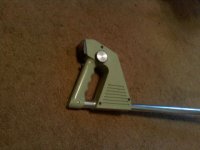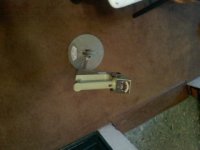firechildc
New Member
- Joined
- Mar 8, 2009
- Messages
- 2
I recently purchased a very cheap metal detector from Harbor Freight. Did it on a whim one day. Only used it once and had a blast! Found enough beer cans and pull tabs to build a life size replica of Optimus Prime!
Now, I realize that a really cheap detector has limits... but what I am looking for is information on basic tuning, discrimination, ground and sensitivity advice as the manual that came with the detector is completely and utterly useless.
Here is a link to the detector I bought...
http://www.harborfreight.com/cpi/ctaf/displayitem.taf?Itemnumber=43149
yes, I know... it's just about the poorest of poor man detectors... but hey... I'm just that... a poor man! HAHAHA. Any advise you can give this newbie (other than "buy a new detector") would be greatly appreciated. Thanks!
Now, I realize that a really cheap detector has limits... but what I am looking for is information on basic tuning, discrimination, ground and sensitivity advice as the manual that came with the detector is completely and utterly useless.
Here is a link to the detector I bought...
http://www.harborfreight.com/cpi/ctaf/displayitem.taf?Itemnumber=43149
yes, I know... it's just about the poorest of poor man detectors... but hey... I'm just that... a poor man! HAHAHA. Any advise you can give this newbie (other than "buy a new detector") would be greatly appreciated. Thanks!


 . You may want to start by starting a coin garden ( bury some coins, note the locations ) and just practice listening for the different sounds each type of coin makes. You may try hunting in an area that doesn't have quite as much junk. Many new detectorist give up way too early because they are disapointed at their success. It takes time, kinda like dating.
. You may want to start by starting a coin garden ( bury some coins, note the locations ) and just practice listening for the different sounds each type of coin makes. You may try hunting in an area that doesn't have quite as much junk. Many new detectorist give up way too early because they are disapointed at their success. It takes time, kinda like dating. 




